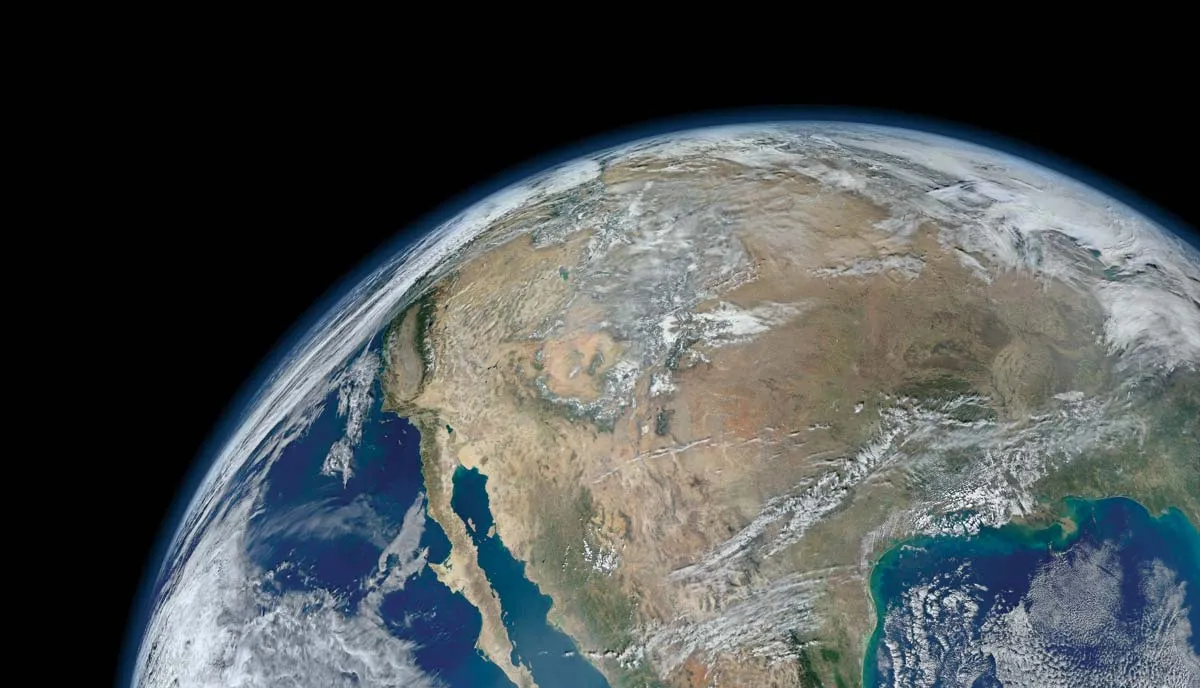Now Reading: 5 Amazing Stages of the Hydrological Cycle You Must Know 2025
-
01
5 Amazing Stages of the Hydrological Cycle You Must Know 2025
5 Amazing Stages of the Hydrological Cycle You Must Know 2025

Table of Contents
Water is the essence of life, and the way it moves around our planet is nothing short of fascinating. This continuous movement of water, from the oceans to the atmosphere and back again, is called the hydrological cycle, or the water cycle. Understanding this natural process is crucial, as it supports all living things and shapes our environment.
In this easy-to-understand guide, we break down the five key stages of the hydrological cycle. Whether you are a student, a nature enthusiast, or just curious about how Earth’s water system works, this explanation will help you see the bigger picture.
1. Evaporation: Nature’s First Step
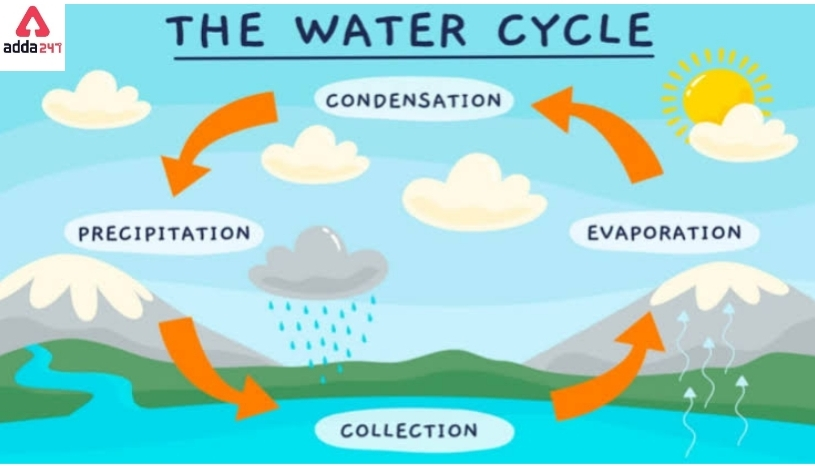
The hydrological cycle begins with evaporation. This is the process where water from oceans, rivers, lakes, and even soil turns into water vapor and rises into the atmosphere. The sun’s heat plays a big role here. It gives water molecules the energy they need to break free from their liquid state and become gas.
Interestingly, about 90% of atmospheric water vapor comes from the oceans, while the rest comes from surface water and even from plants through transpiration (more on that soon).
This stage is vital because it kickstarts the journey of water, carrying it away from the Earth’s surface and into the skies, where it will later form clouds.
2. Transpiration: Plants Join the Cycle
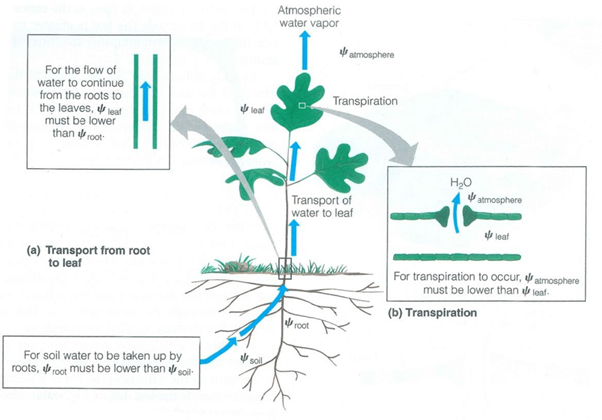
Transpiration is another important part of the water cycle, sometimes called “plant evaporation.” In this process, water is absorbed by plant roots from the soil, travels through the plant, and finally escapes into the atmosphere through small pores on the leaves called stomata.
Transpiration is incredibly important because it not only cools the plant but also moves significant amounts of water back into the air, adding to the moisture needed to form clouds. Combined with evaporation, the process is called evapotranspiration, which describes all water vapor leaving land surfaces.
3. Condensation: Water Becomes Clouds
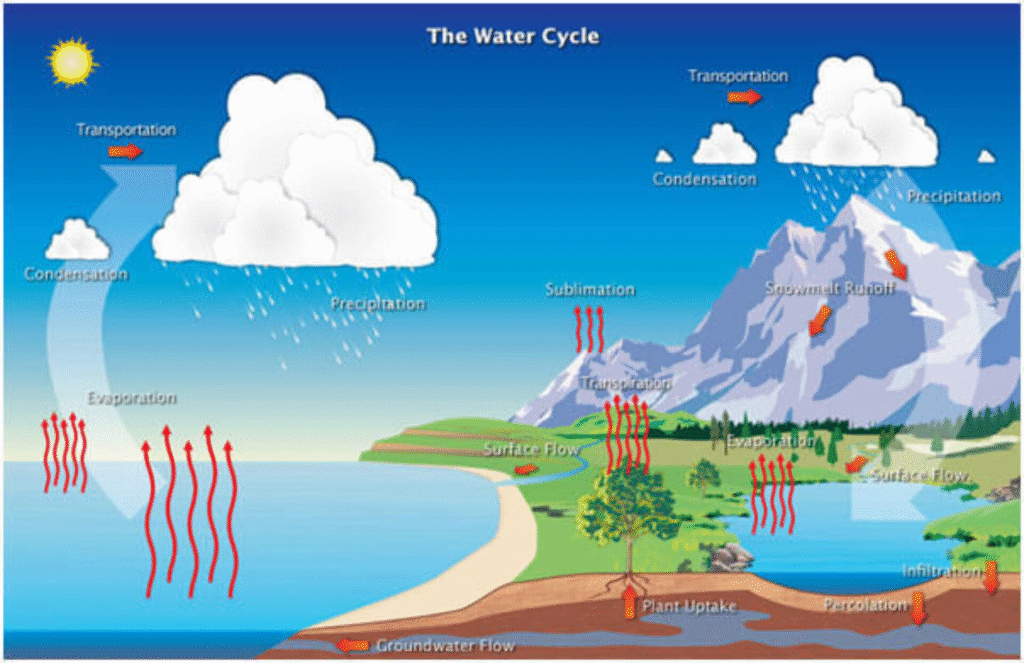
Once water vapor is in the air, it starts to cool as it rises higher into the atmosphere. Cooler temperatures cause the water vapor to turn back into liquid droplets — a process called condensation.
These tiny droplets group together to form clouds and, if the air is cold enough, even ice crystals. Think of condensation as nature’s way of gathering water together again after spreading it out through evaporation and transpiration.
Clouds are not only beautiful but essential. They store the water until it is ready to fall back to Earth in the next stage of the cycle.
4. Precipitation: The Return of Water
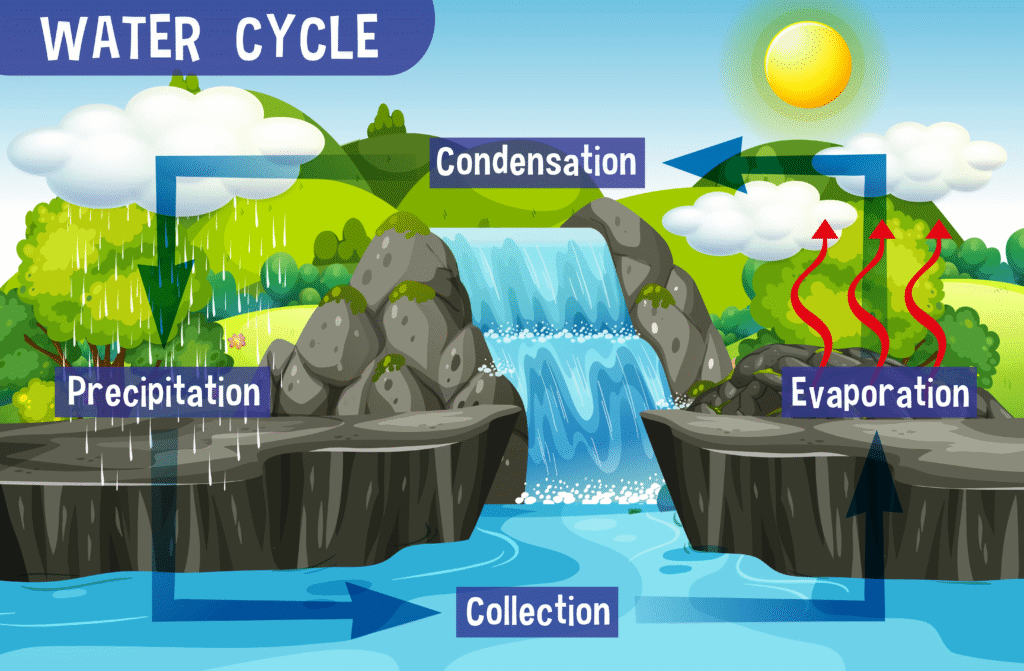
Eventually, clouds can no longer hold all those water droplets. When they get too heavy, the water falls back to the Earth as precipitation. This includes rain, snow, hail, or sleet, depending on the temperature and weather conditions.
Precipitation is the main way water returns to land and bodies of water. It refills rivers, lakes, and underground aquifers. Without precipitation, Earth would quickly dry out, and life would be impossible.
This stage is one of the most visible parts of the hydrological cycle. We see it every time it rains or snows, reminding us how connected we are to nature’s water system.
5. Infiltration and Runoff: Completing the Cycle
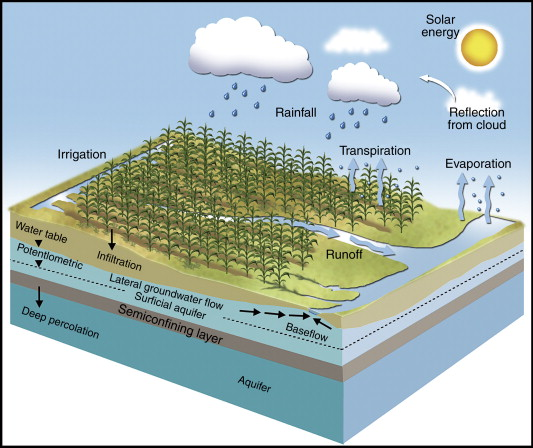
The last key stage of the hydrological cycle is the movement of water once it hits the ground. Some of this water infiltrates the soil and replenishes underground water sources, called aquifers. This underground water supports wells, springs, and groundwater-dependent ecosystems.
The rest of the water travels across the land as runoff, flowing into rivers, streams, and eventually returning to lakes or oceans. This runoff helps shape landscapes, carve valleys, and move nutrients around the environment.
Together, infiltration and runoff complete the journey, sending water back to where it began so the cycle can continue again.
Why the Hydrological Cycle Matters
The water cycle is more than just an interesting science topic — it is vital to life on Earth. Here are a few reasons why:
Water availability – It distributes fresh water to plants, animals, and humans.
Climate regulation – The water cycle helps control temperatures and weather patterns.
Soil and agriculture – Rainfall supports farming and food production.
Ecosystems – Lakes, rivers, wetlands, and forests all depend on this cycle to survive.
Understanding the hydrological cycle can also help us protect water resources. With climate change and pollution threatening water supplies, knowing how water moves around the planet helps scientists and communities plan better for the future.
In Summary
From evaporation to infiltration, the hydrological cycle is a powerful, endless journey that keeps Earth alive and thriving. These five key stages — evaporation, transpiration, condensation, precipitation, and infiltration/runoff — work together like a perfectly balanced machine.
Next time you see rain or feel a cool breeze from a lake, remember the incredible cycle behind it. Water may look simple, but its path through nature is one of the greatest wonders of our planet.
Read More:- Deyaar’s Latest Announcement Shakes Up the UAE Property Market




